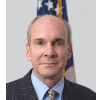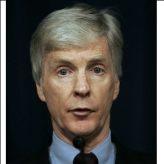Afghanistan
After Arab and Mongol conquests (643-1200 and 1200-1500, respectively), the region fell into fractured ethnic rule: Uzbek, Persian, Mughal and Pashtun. In 1747 Ahmad Shah Durrani unified the Pashtuns and founded the state of Afghanistan, which thereafter became a buffer between British colonial and expanding Russian powers. Afghanistan gained independence from Britain in 1919, but would remain a proxy for contending forces well into the 20th and, many will argue, 21st centuries.
 Hakimi, Eklil Ahmad
Hakimi, Eklil Ahmad
Eklil Ahmad Hakimi, a former citizen of the United States, has been Afghanistan’s ambassador to the U.S. since February 2011.
- Table of Contents
- News
- Overview
- Basic Information
- History
- Newspapers
- History of U.S. Relations with Afghanistan
- Current U.S. Relations with Afghanistan
- Where Does the Money Flow
- Controversies
- Human Rights
- Debate
- Past Ambassadors
- Ambassador to the U.S.
- Embassy Web Site in the U.S.
- Comments
- Leave a comment
U.S. Ambassador to Afghanistan

On September 8, 2014, President Barack Obama nominated Peter Michael McKinley to be the next U.S. ambassador to Afghanistan. If he’s confirmed, it will be the third ambassadorial posting for the career Foreign Service officer.
McKinley was born in Venezuela to Peter and Enriqueta McKinley and grew up in Brazil, Mexico and Spain, as well as in the United States. He went to college in Great Britain, earning a B.Sc. in history, politics and economics from the University of Southampton in 1975. For graduate school, McKinley attended Oxford and earned MPhil and DPhil degrees in Latin American Studies, finishing in 1982. He wrote a book, Pre-Revolutionary Caracas: Politics, Economy, and Society, 1777-1811, that was published in 1985.
McKinley joined the Foreign Service right after leaving Oxford, with his first assignment coming in Bolivia in 1983 as a consular and general services officer. He returned to Washington in 1985, first as an intelligence and research analyst dealing with El Salvador and Cuba. In 1987, he was made a desk officer for Angola and Namibia and two years later he was appointed special assistant for Africa for the Under Secretary of Political Affairs.
In 1990, McKinley was sent to London and covered the Labour Party and Africa for the embassy there. He went to Africa in 1994 as the deputy chief of mission in Mozambique. While there, he helped pressure the government to sign a natural gas pipeline deal with Enron. In 1997, he went to Uganda as deputy chief of mission, and in 2000 he took a similar role in the embassy in Brussels, Belgium.
McKinley was brought home in 2001 to serve as deputy assistant secretary in the Bureau of Population, Refugees and Migration. He returned to Brussels in 2004, this time as deputy chief of mission at the U.S. mission to the European Union.
McKinley got his first ambassadorial post in 2007 in Lima, Peru. Shortly after assuming his post, he helped coordinate the U.S. response to the August 2007 earthquake. In September 2010, he was sent to Colombia to serve as ambassador there.
McKinley went to Afghanistan in September 2013 as deputy ambassador, a role he continues to serve in as he awaits Senate confirmation.
McKinley and his wife, Fatima Salces Arces, have three children: Claire, Peter and Sarah. He speaks Spanish, French and Portuguese.
-Steve Straehley
To Learn More:
State Department Cables 2004-2010 (WikiLeaks)
morePrevious U.S. Ambassador to Afghanistan

After Arab and Mongol conquests (643-1200 and 1200-1500, respectively), the region fell into fractured ethnic rule: Uzbek, Persian, Mughal and Pashtun. In 1747 Ahmad Shah Durrani unified the Pashtuns and founded the state of Afghanistan, which thereafter became a buffer between British colonial and expanding Russian powers. Afghanistan gained independence from Britain in 1919, but would remain a proxy for contending forces well into the 20th and, many will argue, 21st centuries.
 Hakimi, Eklil Ahmad
Hakimi, Eklil Ahmad
Eklil Ahmad Hakimi, a former citizen of the United States, has been Afghanistan’s ambassador to the U.S. since February 2011.
Comments
U.S. Ambassador to Afghanistan

On September 8, 2014, President Barack Obama nominated Peter Michael McKinley to be the next U.S. ambassador to Afghanistan. If he’s confirmed, it will be the third ambassadorial posting for the career Foreign Service officer.
McKinley was born in Venezuela to Peter and Enriqueta McKinley and grew up in Brazil, Mexico and Spain, as well as in the United States. He went to college in Great Britain, earning a B.Sc. in history, politics and economics from the University of Southampton in 1975. For graduate school, McKinley attended Oxford and earned MPhil and DPhil degrees in Latin American Studies, finishing in 1982. He wrote a book, Pre-Revolutionary Caracas: Politics, Economy, and Society, 1777-1811, that was published in 1985.
McKinley joined the Foreign Service right after leaving Oxford, with his first assignment coming in Bolivia in 1983 as a consular and general services officer. He returned to Washington in 1985, first as an intelligence and research analyst dealing with El Salvador and Cuba. In 1987, he was made a desk officer for Angola and Namibia and two years later he was appointed special assistant for Africa for the Under Secretary of Political Affairs.
In 1990, McKinley was sent to London and covered the Labour Party and Africa for the embassy there. He went to Africa in 1994 as the deputy chief of mission in Mozambique. While there, he helped pressure the government to sign a natural gas pipeline deal with Enron. In 1997, he went to Uganda as deputy chief of mission, and in 2000 he took a similar role in the embassy in Brussels, Belgium.
McKinley was brought home in 2001 to serve as deputy assistant secretary in the Bureau of Population, Refugees and Migration. He returned to Brussels in 2004, this time as deputy chief of mission at the U.S. mission to the European Union.
McKinley got his first ambassadorial post in 2007 in Lima, Peru. Shortly after assuming his post, he helped coordinate the U.S. response to the August 2007 earthquake. In September 2010, he was sent to Colombia to serve as ambassador there.
McKinley went to Afghanistan in September 2013 as deputy ambassador, a role he continues to serve in as he awaits Senate confirmation.
McKinley and his wife, Fatima Salces Arces, have three children: Claire, Peter and Sarah. He speaks Spanish, French and Portuguese.
-Steve Straehley
To Learn More:
State Department Cables 2004-2010 (WikiLeaks)
morePrevious U.S. Ambassador to Afghanistan








Comments